Alumni
These former group members have all moved on to bigger and better things! A very talented group of young scientists - gone but definitely not forgotten.
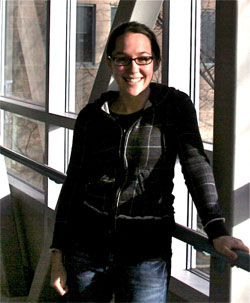
Kate Ross
Kate's research is focused on neutron scattering studies of frustrated magnetic materials. She has an interest in quantum entangled ground states, such as the Quantum Spin Liquid state, and how orbital effects can contribute to or compete with such states.
Kate is currently a post doctoral fellow in the Institute for Quantum Matter at Johns Hopkins University, and is a guest researcher at the NIST Center for Neutron Research.
Website: http://www.katecondensed.com/
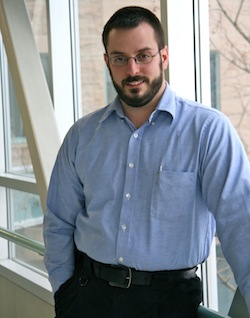
Jeremy Carlo
Jeremy's research involves diverse but specific aspects of magnetism in condensed matter physics, with particular interests in geometric frustration and superconductivity, chiefly in materials based on the perovskite structure.
During 2009-2011 Jeremy worked in Bruce's group as a Research Associate at the Canadian Neutron Beam Centre in Chalk River, Ontario, performing neutron scattering studies of frustrated magnets and superconducting systems. Prior to that, he completed his doctoral work at Columbia University with Prof. Yasutomo J. Uemura, conducting muon spin relaxation studies to establish the magnetic phase diagram of the unusual triplet superconductor Sr2RuO4.
Jeremy is now an Assistant Professor in the Department of Physics at Villanova University, in Villanova, PA, where he has established a bulk materials synthesis and x-ray characterization laboratory, and continues to perform muon spin relaxation and neutron scattering measurements. One research area of continuing interest is frustration in rock-salt ordered double perovskites, utilizing the versatility of the perovskite structure to enable systematic studies of the effects of chemical substitution and structural distortion on frustration physics.
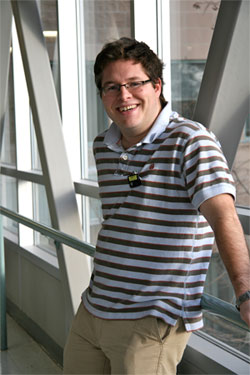
Patrick Clancy
Pat has been involved in a wide variety of research projects during his time with the group, performing x-ray and neutron measurements on materials ranging from low dimensional and geometrically frustrated magnetic systems to high temperature superconductors and heavy fermion materials.
In particular, Pat's thesis work has focused on the magnetic and structural properties of quasi-one-dimensional materials, such as the spin-Peierls compounds TiOBr and TiOCl, and quasi-two-dimensional materials, such as the stacked quantum magnets NaNiO2 and LiNiO2.
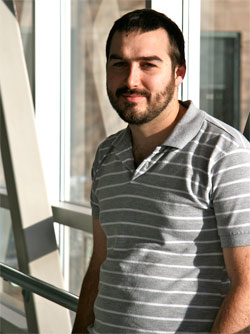
Jacob Ruff
Jacob studied as a graduate student under Bruce's supervision, beginning in 2004. During his time at McMaster, Jacob was by turns a crystal grower, a neutron scatterer, a Phoenix patio enthusiast, and finally a synchrotron x-ray specialist. His dissertation, entitled "Competing interactions in rare-earth pyrochlore magnets: insights from x-rays and neutrons", was completed and defended in 2010. After leaving McMaster, Jacob spent two years developing pulsed magnets as a Director's Fellow at Argonne National Laboratory near Chicago, Illinois. He Left Argonne in 2012 to take up his current staff position at CHESS - a synchrotron source buried underneath the campus of Cornell University in Ithaca, NY. Jacob's personal research involves using synchrotron x-rays to study correlations, excitations and transitions in quantum condensed matter. He also supports a diverse research program at the A2 beamline at CHESS, with ongoing collaborative projects in physics, chemistry, engineering, biology and archaeology.
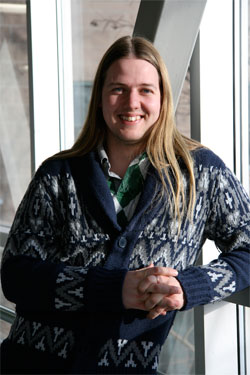
Greg Van Gastel
Greg uses neutron scattering techniques to explore unusual magnetic behaviour in high temperature superconductors. He has had the pleasure of working with the original high Tc material La2-xBaxCuO4, whose magnetic phases appear to be tied directly to the conventional temperature-doping phase diagram for high temperature superconductors.
In the future, he plans to experiment with the growth of large single crystals of Ce doped La2CuO4 to further explore this rich family of materials.
Greg also enjoys teaching at the post secondary level and engaging students in science education in general.
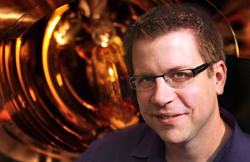
Chris Wiebe
Chris completed his M.Sc. in 1998 with Bruce Gaulin working on heavy fermion superconductors ("A neutron and x-ray investigation of magnetism in heavy fermion based superconductors"). He then worked with John Greedan and Bruce on a variety of projects for his PhD. on frustrated magnetism ("Studies of magnetism in rhenium and manganese based perovskite oxides"). After defending his thesis in 2002, he was an NSERC post-doctoral fellow with Yasutomo Uemura (Columbia) and Graeme Luke (McMaster) until 2004. He spent a year as a visiting assistant professor at Brock University before landing his first tenure track position at Florida State University in 2005 (with a joint appointment at the National High Magnetic Field Laboratory in Tallahassee). In 2009, he returned to Canada as an associate professor at the University of Winnipeg with adjunct status at the University of Manitoba. In 2013, he was named the Tier II Canada Research Chair in Quantum Materials Discovery at the University of Winnipeg and promoted to Professor.
Chris is the PI for the PRIME group which is centred at the University of Winnipeg but involves many institutions in the prairie provinces (the Prairie Research Institute for Materials and Energy). He is involved with the synthesis of new highly correlated electron systems, their characterization through property measurements, and "big science" probes of condensed matter such as x-rays, neutrons, and muons. While most of his research involves crystal growth of new geometrically frustrated materials, he is also interested in high-Tc superconductors, low dimensional magnets, heavy fermion compounds, and new multiferroics. You can read more about his research by following the link below:


